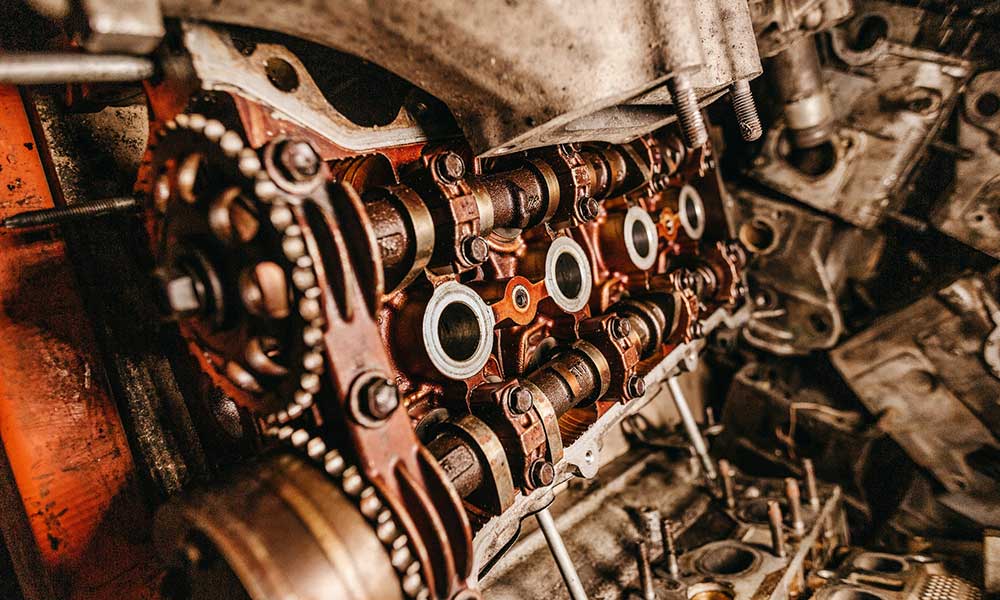Cars require regular maintenance to perform at their best. Sometimes things happen that are beyond your control and your car may require extensive repairs. When a car overheats, you can permanently damage the vehicle’s components, which can result in expensive repairs. Here’s what you need to know about how far you can drive an overheating car and how to avoid your car from overheating.
How Far Can You Drive an Overheating Car?
When you notice your car’s performance declining or the temperature gauge climbing, you realize you have a problem. When you realize your car is overheating, this means there are vehicle components under the hood of your car that are getting hotter than they should.
There is no set mileage you can drive when your car is overheating. You may be able to drive your car 10 to 20 miles before serious damage occurs. Once your car starts to overheat, its components are subject to extremely hot temperatures, which can damage many vehicle components located in the engine bay. When your car starts overheating, you need to address the issue as soon as possible by taking your car to an auto repair shop.
How to Drive a Car With an Overheating Engine
You should avoid driving a vehicle with an overheating engine, but if you have to drive the vehicle, take the necessary precautions.
Drive When the Engine Temperature Is Low
You should only drive the vehicle once the engine cools down. If you notice an overheating engine is not a recurring problem, the culprit could be other factors, such as, operating the vehicle during a hot day, being stuck in traffic, or leaving the air conditioning on. As a precaution, make sure you keep an eye on the temperature gauge to avoid encountering other major problems.
Keep the Air Conditioner Turned Off
Keeping the air conditioner turned off in your car reduces the strain on the engine. Your car’s AC uses engine power to cool or warm the vehicle. An alternative to running the air conditioner is rolling down the windows.
Turn the Heat and Fans On to the Highest Level
Although this may seem counter-productive, when you turn the heat on in your car, it pulls the heat from the engine to warm the inside of your car. The more heat you pull from the engine, the better the engine will function. To avoid being uncomfortable while driving, turn the vents towards the windows of the car.
Shift the Gear to Neutral and Rev the Engine
Shifting the gear and revving the engine is one of the quickest ways to circulate air in the engine. Once your car is in neutral, rev the engine up to 2,000 rpm. Revving the engine allows coolant and cold air to reach the engine, removing excess heat.
Use Water As a Coolant Substitute
If you have run out of coolant, you can use water to help cool off your engine. Using water as a substitute for coolant is not recommended for long drives. However, water will help your engine stay cool between coolant top-ups. Be advised, using cold water can cause cracks in the engine block because of the immediate change in temperature from boiling hot to cold.
Drive Short Distances
The goal is to maintain the engine’s optimal temperature when overheating becomes an issue. If you have to drive a long distance, drive for short intervals, pull over in a safe location, turn off the car, and sit for 10-20 minutes. Repeat this process until you reach your destination. Keep an eye on the temperature gauge to help you determine when you need to pull over.
How to Avoid Overheating an Engine
There are different steps you can take that will help you avoid overheating your engine.
Keep a Slow, Steady Pace
Before you start traveling, you need to choose a route that doesn’t have a lot of stops or traffic lights. It’s important to maintain a slow, steady pace to avoid overhauling the transmission. Stopping and starting your car stresses the engine, which can cause the engine to overheat, especially with older vehicles. You also need to maintain a safe distance between you and the vehicle in front of you to avoid hard braking.
Roll Down the Windows Instead of Using the Air Conditioner
If you can, avoid running the air conditioner in your car. Turning on the air conditioner in your car stresses the engine by using the engine’s power to generate cold air on the inside of the car. You especially want to avoid running the AC if:
- You are behind on having your car inspected
- You have unresolved issues with your air conditioning
- You are running low on coolant
- You have a leak in your radiator
Maintain Regular Car Inspections
Regularly changing your car’s oil, refilling the coolant, and performing other essential tasks helps keep your car operating smoothly. When you get your oil changed, ask the mechanic to check the fans, so if there’s a problem, it can be addressed before your vehicle starts to malfunction.
Refill Your Coolant Levels
You need to make sure your coolant levels are topped off, especially before the summer months roll around. During the summer, the air is hotter, which means you need to keep a close eye on your coolant levels. Make sure you mix equal parts of coolant and water to fill the coolant reservoir to the recommended levels. Coolant is usually green and has a sweet smell. Before you take a drive, check around the engine, under the car, and around the hoses to check for leaks.
Keep an Emergency Kit In Your Car
One of the last things you want to happen is being stranded on the side of the road with an overheating engine. The best thing you can do is be prepared. Your car emergency kit needs to include:
- Gallon of water
- Blanket
- Flashlight
- Extra coolant
- Non-perishable food
- Screwdrivers
- Tool-kit
Signs Your Car Is Overheating
Your car will let you know when something is wrong. If your vehicle is overheating, you may notice:
- An unusual smell coming from the engine
- Water vapor or steam
- The needle on the temperature gauge steadily increasing
If you notice any of these signs, you need to take your car to a mechanic to have all issues and concerns addressed.
What Causes a Car to Overheat?
There are different factors that can cause your car to overheat. Here’s what you need to know.
Low Coolant Levels
Without coolant, your car will overheat. Coolant is a necessity for your car because it pulls heat away from the engine. You may notice water vapor or steam leaking out of your engine, which is likely coolant. The more steam or vapor you see, the more coolant is escaping from your car. Low coolant levels are the most common cause of an overheating engine.
Problems With the Fans
Be advised, not all cars have a fan belt, but the vehicles that have a fan belt will overheat when your car is malfunctioning. Your car may have an electric cooling fan, and if so, you’ll notice your engine’s temperature increase when you’re in traffic or traveling at low speeds.
Thermostat
If you notice your car overheating, the thermostat may be the culprit because the thermostat isn’t opening. When you’re traveling at high speeds, your car requires extra coolant to maintain optimal performance. If the thermostat isn’t opening, the engine can’t receive the correct amount of coolant, which causes the engine to overheat.
Having a vehicle requires you to perform regular maintenance in order to keep it operating correctly. Properly maintaining your vehicle will help prevent your car’s engine from overheating and other serious problems.









